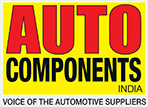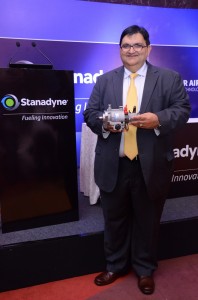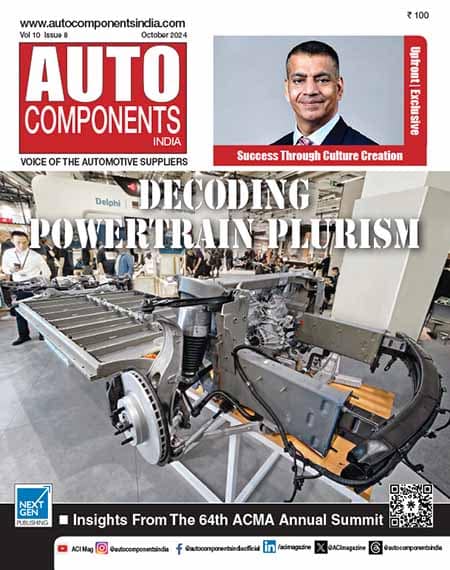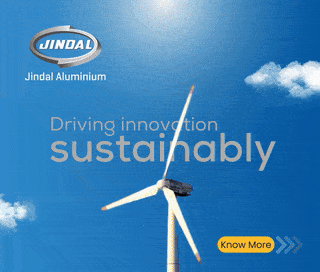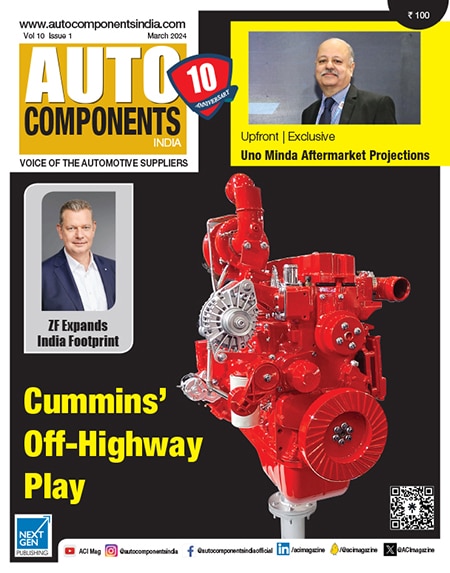Text : Bhargav TS
Stanadyne, manufacture of diesel and gasoline systems will be launching new fuel injection system for the sub 50 HP engine market that will decrease particulate emissions by 50%. The system is also capable of enhancing the fuel efficiency by 8%, which helps the end user to save the fuel bills. The company recently launched its next-generation diesel fuel injection system for the Indian market, which is targeted at off-road applications has been fully developed by Stanadyne’s engineering team in India with 90% localisation.
The company manufactures the fuel injection system at its Chennai plant, which has an annual capacity of 90,000 pumps and it is planning to increase this to 250,000 units in the next 2 years at an investment of Rs 100 crore. Sanjay Chadda, Managing Director, Stanadyne India said, “The newly launched fuel system can take any fuel available in India since we have tested the system with even kerosene. Our product portfolio for the market has been engineered for the next generation of engines and emission norms. The Chennai facility is a fully integrated engineering and technology team responsible for the design, development, testing and manufacturing of products. We are ready to take the next level of emission norms as we stand ready to work with regulators and manufacturers to implement technology that provides significant benefits to the environment and end user.”
Particulates have been injected in the air via emissions and the air pollution has become pervasive where the ill effects of the same ascend and hits the red gong. Urgent need for clean technology is required to reduce emissions which in turn instill fresh thinking in fuel injection systems particularly for engines below 50 HP says Dr John Pinson, President and CTO, Stanadyne.
These engines often serve farming, construction and industrial sectors which contributes 95% of off road particulate emissions. R&D Engineering team in Stanadyne keeping in mind the Indian sub continent market develops new product addressing the dual concerns vis-à-vis high fuel costs and air quality emissions. Pinson commented that the innovative fuel injection system will enable manufacturers to achieve efficiency a step ahead than expected, increased performance and lower emissions.
Chadda added that India is working vigorously on emission standards and Stanadyne before hand foresees and works in-line with the emission standards and this infuses clean technology thinking in our engineering minds resulting in the current initiative of environmental friendly fuel injection system administered with re-engineering technology. The already proven pump technology is now in proposal stage for engines below 50 HP which enables reduction in particulate emissions by 50% improving engine power and fuel economy. Clear air, clear sky, quality life are inevitable attributes to have a synonymous standards with government regulations and Stanadyne now emulates the same per-se with technology driven research and development.
Stanadyne, which is operating in India since 2001 with its partner Amalgamation Group, manufactures mechanical pumps, fuel injectors, integrated fuel systems and mono block pumps for the off-road segment. In the domestic market, Stanadyne supply key clientele include Mahindra & Mahindra, Greaves, Cooper Corporation, Ashok Leyland, John Deere, TAFE, Kirloskar Engines, JCB and Cummins India. It recorded a turnover of Rs 170 crore in FY2014-15 and aims to double it by 2017 primarily through new markets, new products and new customers.
INTERVIEW
Sanjay Chadda, Managing Director, Stanadyne India
“We have the technology that is currently used in Europe for the diesel engines and this is being manufactured in India and exported to other countries”
Q: What are all the new products that Stanadyne is currently working?
Chadda: We are working on the next stage of common rail diesel injection systems for passenger cars, which is currently under development and we will be launching it in the coming years.
Q: How unique is the new common rail system and what are all the technological advancements the new system has?
Chadda: We are looking at multiple options as the technology is currently available and all the OEMs are using it. There is a differentiation that we need to bring to the table, for which we are currently in the process of getting the voice of the customer so that we can fill the gap which is currently getting exhibtied. By 2012 itself common rail has reached the matured state in India and we are trying to applicate that across the nation in 2017. The common rail requirement in India is increasing as the new emission norms for the on-road vehicle is expected by 2020. We are looking at the future requirement based on the emission standards and working to mitigate the gaps suppliers have today.
Q: Tell us about your engineering centre at Chennai? Is it focusing on any Centre of Excellence?
Chadda: Currently the Centre is being the Centre of Excellence for mechanical fuel injection systems. For the smaller engines (single cylinder) we have single cylinder pump, rotary pump and also the injectors that we are able to manufacture here in our Chennai plant with the help of development center. The R&D centre is helping us to develop advanced injection systems which is currently used in Europe for the diesel engines, which is being manufactured in India and exported to other countries.
Q: What are all the advantages of newly launched fuel injection system?
Chadda: We have developed this new fuel injection system to achieve breakthrough efficiency, increased performance and lower emissions. It can take fuel available from any part of India since it has been tested even with kerosene.
Q: OEMs are also working on standardisation that results in global platforms. On the contrary there is also a mention about customised solutions – can you throw little light on this?
Chadda: Primarily OEMs develop global platforms as it helps not only to contain cost but also to squeeze the development time. However, it is necessary to customise to the target markets. The emerging trend is to make the core development to happen in the major market and take the same to the other markets. For instance, India is a market for small cars and therefore OEMs are making the vehicle development on that platform led out of India for the world. They are positioning themselves in terms of the segment that the vehicle is targeted and the relative development. We see a convergence happening in this perspective.
